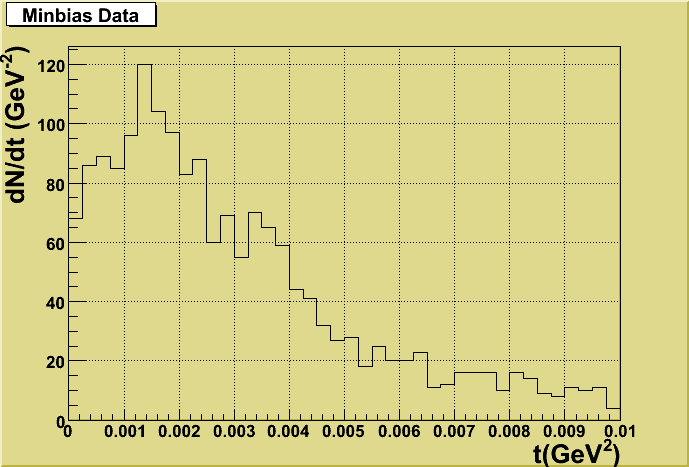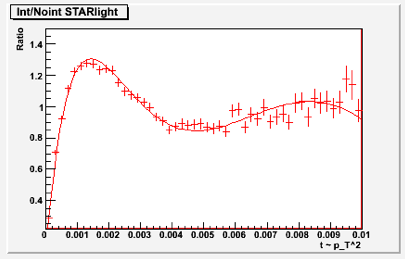
In UPC collisions which photoproduce a &rho, a photon from one nucleus fluctuates into a quark-antiquark pair and scatters off the second nucleus producing the &rho . The t &cong pT2 spectrum for &rho production, where t is the 4 momentum transfer squared, is sensitive to interference between the two possible production channels: the first nucleus emits a photon which scatters from the second nucleus, or vice versa. This interference presents as a supression in of dN/dt at low t. We attempt to measure this interference by imposing certain strict cuts at the cost of efficiency to isolate the resulting &pi+&pi- decay pairs and reconstruct the parent &rho . We model the interference with events generated with our Monte Carlo generator, STARlight. Two sets are generated, one with interference and one without. A ratio is arrived at by dividing the t spectra of the sets. The ratio is then fit with a function [R(t)] which figures into the overall fit applied to the data: Ae-kt(1+c[R(t)-1]). A normal t spectrum, without interference, should exhibit exponential behavoir in t. The overall fit includes this exponential with an added parameterization to fit the interference where c = 1 gives the expected degree of interference and c = 0 gives no interference.
| Dataset | Minbias | Topology |
|---|---|
| nPrim == 2 nTot == 2 qTot == 0 |
nPrim == 2 nTot == 2 qTot == 0 p5 > 10 p5 != 20 |
| Vertex | abs(zVertex) < 50 cm abs(rVertex) < 8 cm |
|---|---|
| Mass | pPairs.pionH.mInv > 0.55 GeV & < 0.92 GeV |
| pT | 0 < pT < 0.1 GeV |
| Rapidity Minbias |
abs(pPairs.pionH.yRap) > 0.0 & < 0.5 -or- abs(pPairs.pionH.yRap) > 0.5 & < 1.0 |
| Rapidity Topology |
abs(pPairs.pionH.yRap) > 0.1 & < 0.5 -or- abs(pPairs.pionH.yRap) > 0.5 & < 1.0 |
 |
Figure 1: |
| nPrim == 2 | qTot == 0 |
|---|
| Vertex | abs(zVertex) < 50 abs(rVertex) < 8 |
|---|---|
| Mass | pPairs.pionH.mInv > 0.55 && < 0.92 |
| pT | pT > 0 && pT < 0.1 |
| Rapidity Minbias |
abs(pPairs.pionH.yRap) > 0.0 && < 0.5 -or- abs(pPairs.pionH.yRap) > 0.5 && < 1.0 |
| Rapidity Topology |
abs(pPairs.pionH.yRap) > 0.1 && < 0.5 -or- abs(pPairs.pionH.yRap) > 0.5 && < 1.0 |

 |
Figure 2: |

 |
Figure 4: |
 |

Figure 5: |